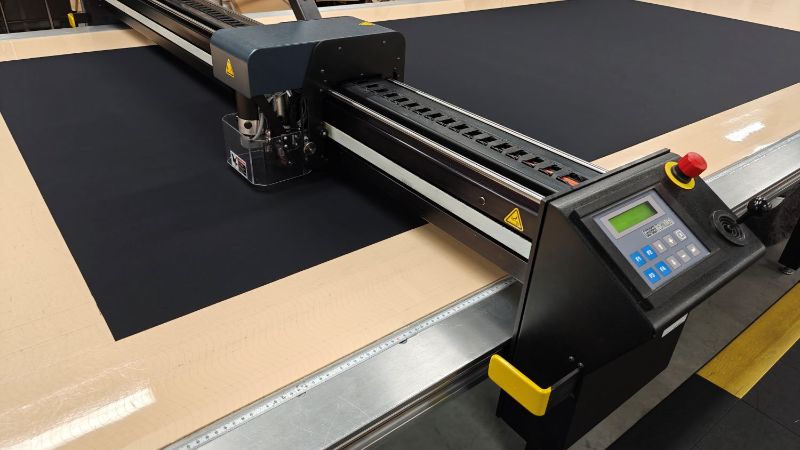Cutter
"Automation has had a significant impact on the textile industry. In the future, its significance will increase further, and 3D competence will become necessary, for example, when working with patterns. The number of jobs in the sector is likely to decline and the importance of technical competence will increase."

- Heli Mustonen
- Cutter at Ursuit Oy.
- Completed a vocational qualification in the textiles and fashion industry through an apprenticeship at the Turku Vocational Institute and Ursuit.
- One year of work experience in the field.
Briefly explain what you do for a living.
My job is to cut and prepare the materials of diving and rescue suits for sewing. Usually, I use a pattern-making application to create cutting layouts according to the work orders. This means that I lay out the pattern pieces for a specific garment size according to technical instructions. Then I use the automated cutter to cut the laid out pieces. After this, I prepare the suit for sewing.
How have you ended up in the profession of your choice?
I’ve always been interested in the textile industry and enjoyed working with my hands, so I decided to study in the textile industry.
Describe your typical working day or week.
I start my morning by booting up the computers I need for creating the layouts, cutting and recording work-related information. Then I bring up the work order according to which I will make the cutting layouts for the different materials used in the suit. Sometimes I make pattern changes to the layouts according to the customer’s wishes, such as shortening or extending the legs and sleeves.
I then cut the required number of pieces from the material and place the pieces on the automated cutter’s cutting table. Then I retrieve the layouts on my computer, add the correct settings in the program, and cut the pieces according to the pattern layout. Finally, I bundle all the pieces together and make the necessary markings for sewing and further treatment. In addition, I print a label and a serial number for the suit and make the necessary entries on the computer. After this, the suit is ready for sewing.
Sometimes we work in teams, which means that I may be doing just cutting all day. The next day, we switch tasks with another team member.
What kind of work environment or working hours do you have?
The cutting team works together in a big production space. The automated cutter is loud, so it’s recommended to wear hearing protectors when working with it. The cutter also creates textile dust, so the work is not suited for people who are sensitive to dust. For the most part, cutting is standing work.
The work is done in two shifts. The morning shift is from 6 am to 2 pm and the evening shift is from 2 pm to 10 pm.
What kind of competence or qualities are required in the profession?
A vocational qualification in the textile industry is pretty much a requirement in order to be able to identify and understand the pattern pieces and shapes. The work requires a systematic approach as well as precision and care. You must also be patient and able to adapt to changes.
What is the best thing about your profession?
The best thing about the work is when you get to see the end result, a beautifully made diving or rescue suit. Sometimes we are very busy, and then we get a lot done, which gives me a feeling of accomplishment.
What are the downsides of the profession or what seems challenging?
When there are fewer work orders, it causes me stress and frustration.
What would you tell a person considering the profession of a cutter?
The work of a cutter is very interesting and varied, and the days go quickly. I feel that this work is very valuable.
How do you see the future of your profession?
Automation has had a significant impact on the textile industry. In the future, its significance will increase further, and 3D competence will become necessary, for example, when working with patterns. The number of jobs in the sector is likely to decline and the importance of technical competence will increase.
